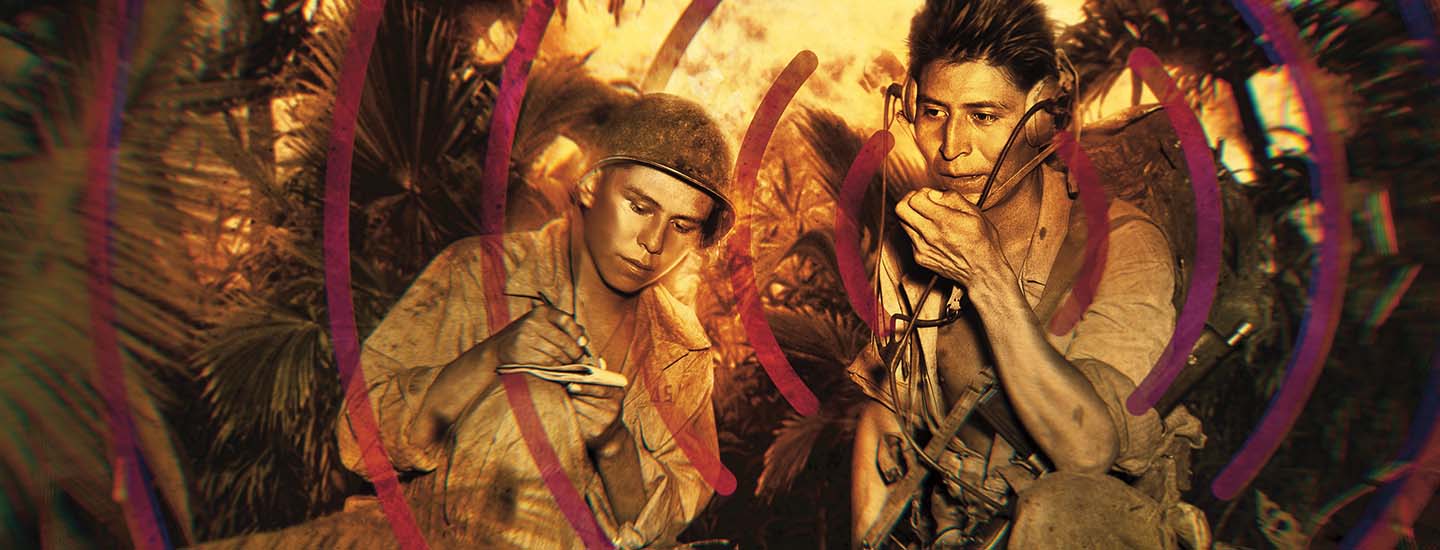Jim McMahon/Mapman ®
Chester Nez had never been so scared in his life. He was nearly 7,000 miles from home. It was pouring rain. Bullets zipped over his head. Bombs shook the ground nearby.
Welcome to Guadalcanal. It’s just a tiny island in the Pacific Ocean. But on November 5, 1942, it was the most important place on Earth. The U.S. Marines were battling the Japanese in World War II (1939-1945). And Nez had a job to do.
Chester Nez was scared. He was nearly 7,000 miles from home. It was pouring rain. Bullets flew over his head. Bombs shook the ground.
Welcome to Guadalcanal. It’s an island in the Pacific Ocean. And on November 5, 1942, it was the most important place on Earth. The U.S. Marines were fighting the Japanese in World War II (1939-1945). And Nez had a job to do.
Chester Nez had never been so scared in his life. He was nearly 7,000 miles from home. It was pouring rain. Bullets zipped over his head, and bombs shook the ground nearby.
Welcome to Guadalcanal. It’s just a tiny island in the Pacific Ocean—but on November 5, 1942, it was the most important place on Earth. The U.S. Marines were battling the Japanese in World War II (1939-1945), and Nez had an important job to do.

